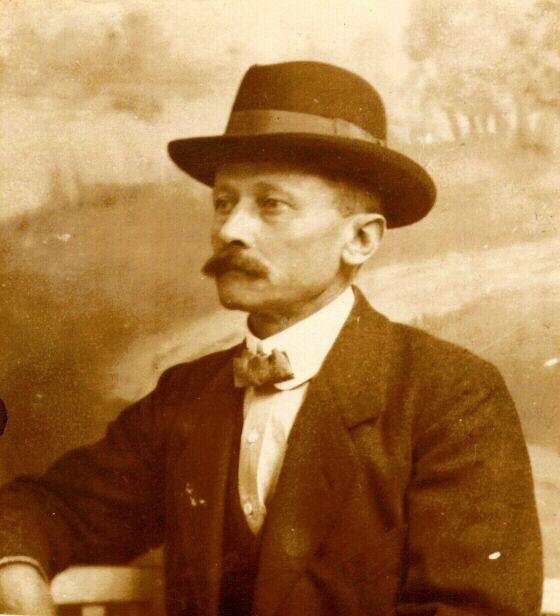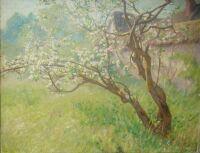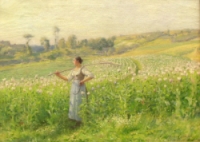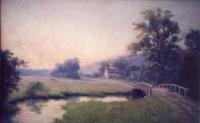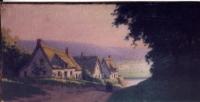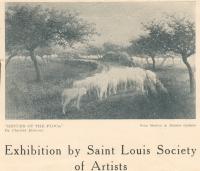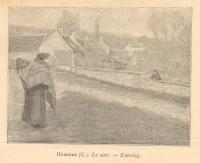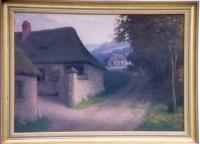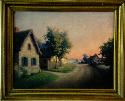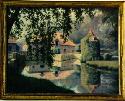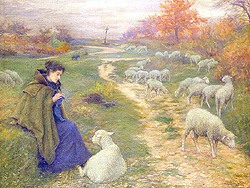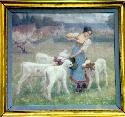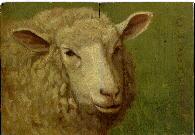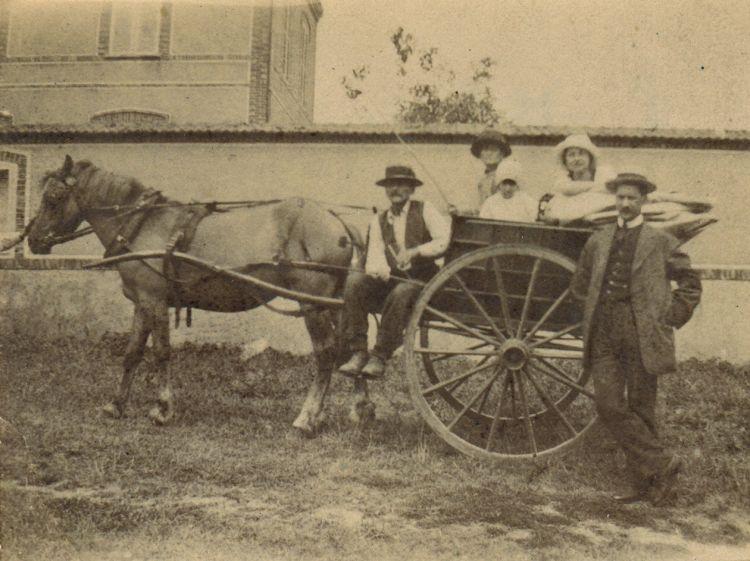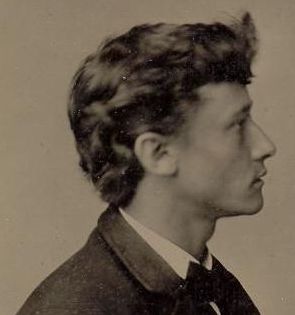
Facts / Sources Section for
CHARLES HEBERER:
CHARLES HEBERER:
Here is the data
Born on :
10/04/1865.
Born in :
Centralia Illinois.
Married on :
09/25/1902.
Married in :
Paris, France.
Died on :
06/02/1952.
Died in :
Sioux City, Iowa.
Buried Graceland Cemetery
2701 S Lakeport St
Sioux City, Iowa 51106
Here are some documents
For some reason most
galleries list Charles
birth as 1868 but I have
many documents confirming
10/04/1865
1910 Census
Passport ID
Here are photos
around Brechamps
Brechamps
Charles home
From back
The village
Environs
Website of Brechamps

This is from a newspaper
talking about Charles
Caption 1
Caption 2
This is a portrait
of charles daughter
painted when she was
about 12, "Yvonne"

This is the comments
about the painting.
below.
Click for Comments
Here is a picture
of the painting
in the above article.
It was done in different
lights at different
times of the day.
Its title is
"Morning in an Orchard Corner"
It was painted in 1891.

We recently found images of
some of his early works
This is one I found in the internet
Its title is "Poppy Fields"
It was done in 1890
Its dimensions are 16.5 x 12.8

Here is another images of
one of his early works
Its title is
"La Celle au Pontaisie".
It was done in 1894
Its dimensions are 15.25 x 18.25
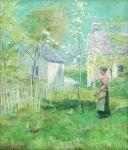
This early work is titled
"Shepherdess with Sheep"
Its dimensions are 16 x 13
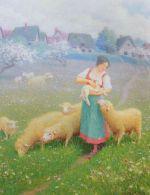
These two paintings
sold at auction in 2000
"Governor Moscow"
"Prairie Queen"
Its dimensions are 8.2" x 12"


Click link to see several
pages of photos
of Brechamps an its people.
Brechamps photos
 |
|||
WELCOME TO THE CHARLES HEBERER PAGE
Charles was my
Great Grandfather

Charles was the last of ten children. He was around seven years of age when his father and brother Ewald died from an illness. He was very fortunate to come from a prominent family that was able to further his education. His father Thomas was a town alderman and was part owner of the City Park Opera house and a brewery in Belleville Illinois. However, he now had to live with his mother and brother Herman until he attended the St Louis School of Fine Arts. I know very little about his life between finishing school and leaving for France. I do know while he traveled east making his way to the Atlantic Coast he stayed in Nashville and traveled through western Pennsylvania. On May 23, 1887 the Daily American, Nashville reported in the ART NOTES section about Charles leaving for the "wider and higher technical atmosphere of the French Ateliers." He would have been about 21 at the time. On May 26, 1887 the Daily American reported on the First annual banquet on the Nashville School of Fine Arts in the private studio of the director, Mr George W. Chambers, in the Watkins Institute. Officers of the Art Association and a limited number of art lovers sat at a long banquet board. the feature of the occasion was the departure , for a sojourn of five years in Paris, of Mr. Charles Heberer, Mr Chamber's valuable assistant. Mr. Heberer leaves. Monday and goes direct by the steamer Egypt to France. As he traveled to meet his ship he passed through the western area of Pennsylvania and in it he saw a beauty that would stay with him and draw him back later in life. A hazy rolling countryside set in the hills north of Pittsburgh. In 40 years this quiet country setting will be his home.
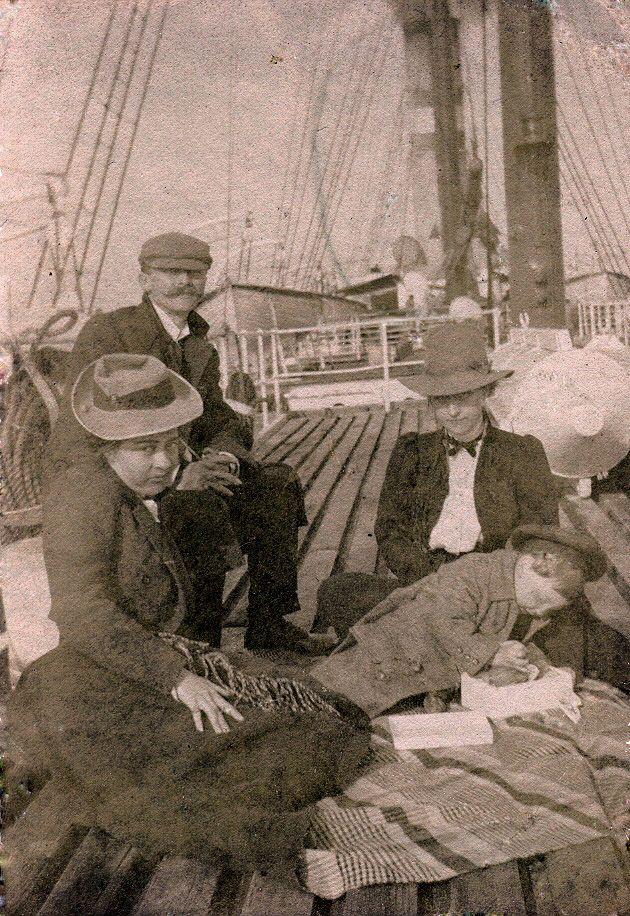
This is Charles Thomas Heberer on a steamer to France.
This would have been about 1887.
First to Paris. Charles studied in Paris at the Academie Julian under Boulanger, Jules Lefebre, Benjamin Constant, and worked with Toulouse Lautrec and Charles Conder. He worked at his craft as most artist, in museums copying the masters. He would paint and as visitors passed by they would ask to buy his paintings. He earned a living in doing this and painting murals in restaurants and cafes. Times were good for Charles in the 1890's and he was successful enough to exhibit his works at the Paris Salon. These were works of morning and evening landscapes in and around the Norman farmlands. In this period he started to roam the Norman countryside-painting herds of sheep and cows. In this environment he met a young girl who would model for him often. Marceline was the daughter of Clement Bonnemaine. He shipped local vegetables to the markets in Paris. Charles would eventually marry Marceline in Paris. Charles had a fondness for the writings of the poet Robert Burns. In his early period he often painted the subject. Around 1900 he bought a house in the village of Brechamps. I often wondered how he found the small village of Brechamps. Was it while he painted in and around Paris? What did he admire about the village that drew him to move there? Was it the landscape, the people, I guess I will never know? Brechamps is a small village South West of Paris. From here he walked the countryside and painted landscapes, farm animals, and Norman woman. He traveled to neighboring towns and countries and was never without his oils. Charles was starting to make a good living from his own paintings and started to purchase art from artists he revered. This he did from time to time for the rest of his life. The names of some of the artists he collected were: Sir Joshua Reynolds, Diego Velázquez, Thomas Gainsborough, and Mieris. Charles' knowledge of the great works were put to use after the war when he was asked by the French government to help identify art that was looted from museums.
|
